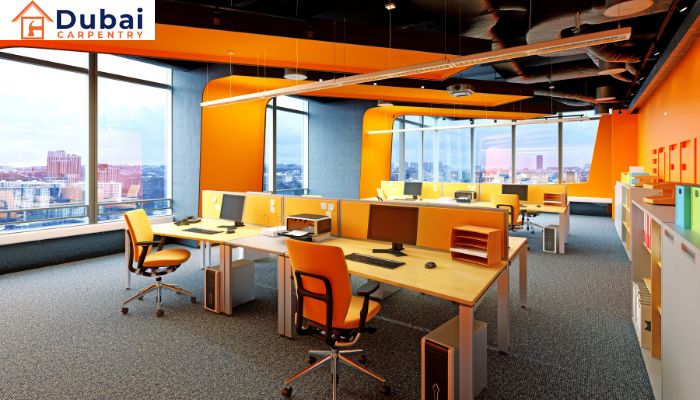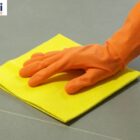Office furniture is important in today’s dynamic and fast-paced work environment. Its importance goes beyond its simple functionality. Office furniture is the cornerstone of productive workplaces. It fosters collaboration, comfort, and creativity among workers. Over the past few decades, office furniture has changed dramatically, largely due to changes in work culture, aesthetics, and ergonomics.
The Ultimate Guide to Office Furniture explores the role of furniture in modern workplaces. Furniture can make or break an office’s atmosphere, from sleek desks to ergonomic chairs that support productivity for long periods of time.
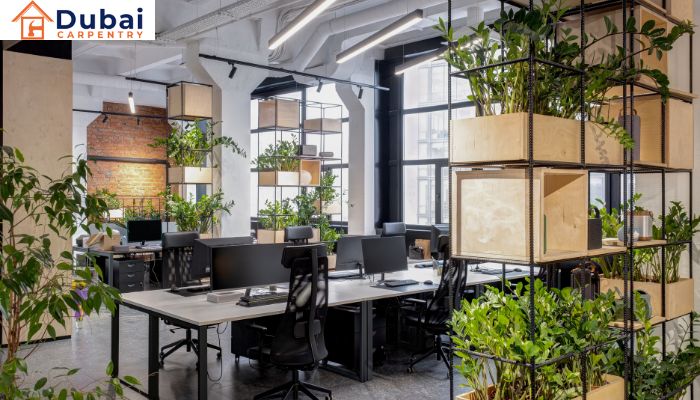
Office furniture is essential for modern workplaces
The importance of office furniture in today’s workplaces is not just about the comfort of workers, but the productivity of their work and the well-being they experience. The importance of modern office furniture is explained in the following way:
- Comfort and Ergonomics: Office furniture with ergonomic features, like adjustable desks and chairs, can help to improve posture and reduce the chance of injury. They also enhance comfort for long work hours. The use of comfortable furniture increases employee satisfaction, which in turn leads to increased productivity.
- Productivity and Efficiency: Office furniture layouts and designs can significantly impact the efficiency of workflows and teamwork. Thoughtfully designed workspaces and meeting spaces facilitate teamwork and communication.
- Professional Image and Branding: The office furniture you choose reflects your professionalism and brand identity. Styled and maintained furniture makes a good impression on clients, employees, and visitors. It reinforces the brand and its values. Consistent furniture choices can help strengthen an organization’s culture and cohesion.
- Employee Morale and Engagement: A comfortable and pleasing work environment contributes to greater levels of engagement, satisfaction, and morale. When employees feel appreciated and at home in their workplace, they are more motivated to do their best work. They will also be more creative and invest in it.
- Health and Well-being: Uncomfortable or poorly designed furniture can cause physical discomfort and fatigue among workers. Stress and anxiety are also possible. By investing in ergonomic furniture, which promotes good posture and minimizes the strain placed on the body, you can reduce the likelihood of injuries at work and improve employee health and well-being.
- Flexible and adaptable: The modern work environment is increasingly flexible and adaptive to new technologies and changing requirements. Flexible and modular furniture allows organizations to optimize and reconfigure their workspaces as required, accommodating changing work styles, team structure, and technological advances.
- Space utilization and efficiency: Effective space usage is key to maximizing office functionality and reducing costs. Well-thought-out space planning and furniture selections can help maximize space usage, reduce clutter, and promote a more productive and organized work environment.
Office furniture: Definition and importance in workplace design
Office furniture refers to equipment, furnishings, and storage designed for use in an office environment. This includes desks, chairs, tables, cabinets, shelves, and other accessories. Office furniture is essential to the design and function of the workspace, as well as the efficiency and comfort of the employees.
It is impossible to overestimate the importance of office furniture in workplace design. Let’s examine its definition and significance.
- Functionality: Office furnishings are designed to provide employees with solutions that help them complete their tasks efficiently. Ergonomic desks and chairs encourage good posture, reducing the likelihood of developing musculoskeletal problems.
- Organisation: Office furniture that is well-designed helps to create an organized, clutter-free work environment. This allows employees to be more efficient and maintain their routines. Cabinets, shelves and filing systems allow employees to easily store, access and manage documents, equipment and supplies. This streamlines workflows, and reduces wasted time looking for things.
- Productivity: Office layout and furniture arrangement can significantly impact employee productivity. Thoughtfully designed workstations and meeting spaces can facilitate collaboration, communication, and idea-sharing among team members, fostering a culture of teamwork and innovation.
- Comfort and well-being. Comfortable, ergonomic furniture improves worker comfort and helps reduce the likelihood of injuries or discomfort at work. Standing desks and footrests, along with chairs with adjustable features and lumbar supports, help alleviate fatigue and physical strain so employees can work for longer periods of time without losing their vitality and health.
- Aesthetics & Professionalism—Office furniture is a major factor in determining the professional and aesthetic image of your workplace. Stylish and modern furniture reflects the brand and its values, creating a good impression for clients, employees, and visitors. Cohesive furniture and thoughtful design contribute to an inspiring and visually pleasing work environment, which increases employee engagement and morale.
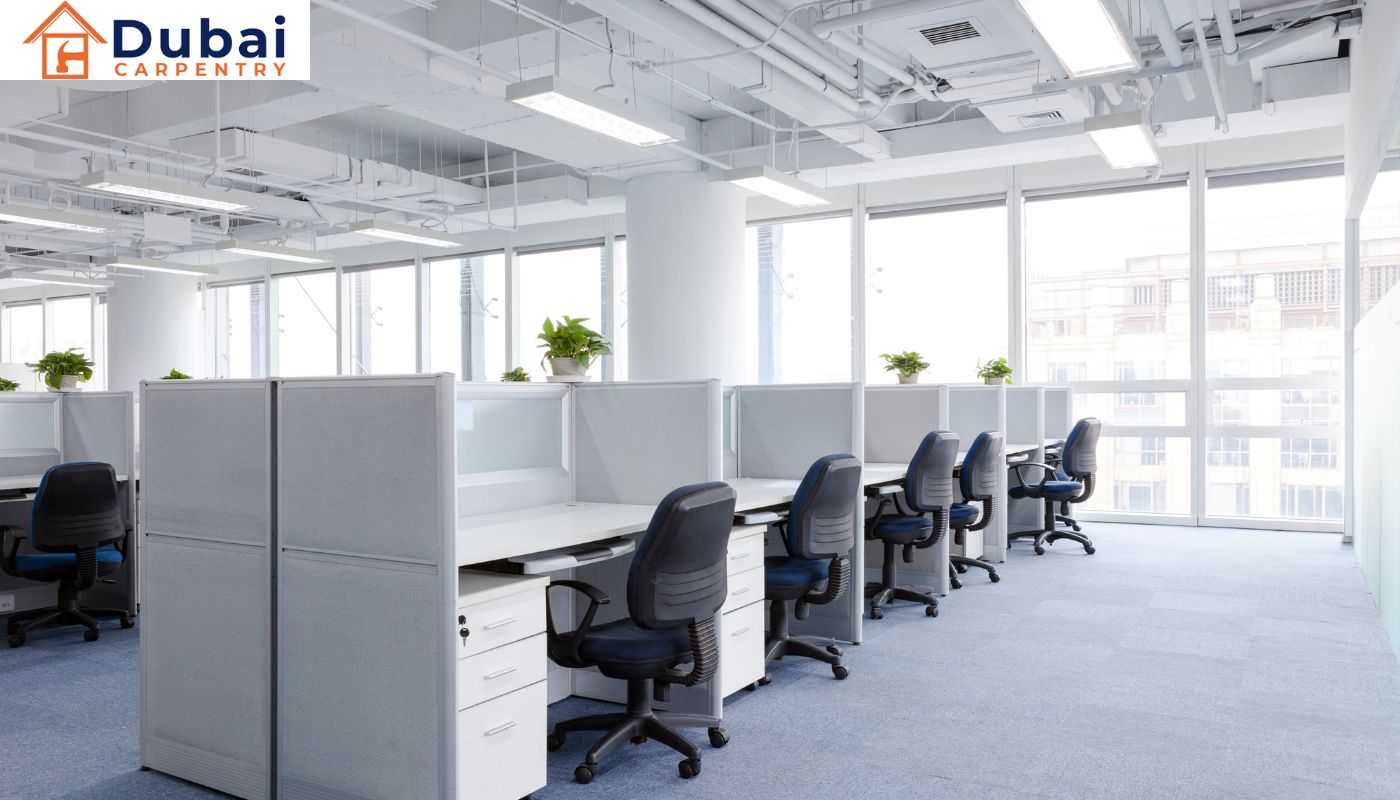
Explore Different Office Furniture Types
Office furniture is a broad category of items designed to create functional, comfortable and efficient work environments. These are the most common types of furniture found at work:
Office Chairs:
Ergonomic chairs: These are designed to promote good posture and reduce stress on the back, neck, and shoulders, especially during prolonged periods of sitting.
Executive chairs: These are usually larger, more comfortable, and luxurious, with high backs and armrests. They’re suitable for managers.
Work Chairs: These simple and flexible chairs are designed for everyday workstations. They feature adjustable backrests and height.
Guest chairs: Used to offer comfortable seating in waiting rooms and reception areas for clients and visitors.
Desks and Workstations
Computer Desks: Available in a variety of sizes, these desks are designed to hold computers, monitors and keyboards.
Standing Desks: These desks allow the user to switch between sitting and standing throughout their workday, promoting movement and reducing sedentary behaviours.
L-Shaped and U-Shaped Desks: L-shaped desks and U-shaped desks are ideal configurations for multitasking, organizing and storing materials.
Collaborative Workstations – Shared work areas designed to encourage collaboration amongst employees. Often open plans and sharing resources are used.
Storage Solutions
File Cabinets: These cabinets organize documents, files, and office supplies. They come in various configurations, including vertical, horizontal, and mobile.
Bookcases and Shelving Units: Bookcases, Shelving Units, and Display Cases are great for storing and displaying books, binders and other decorative objects, as well as personal items.
Credenzas and Buffets: Credenzas or Buffets are versatile storage units that can be placed in private offices, conference rooms, or reception areas to hold supplies, equipment, or refreshments.
The furniture for meeting and conference rooms:
Conferencing Tables: These large tables are designed for meetings, presentations, and group discussions. They come in different shapes, sizes, and materials.
Meeting Chairs: comfortable chairs for long meetings or conferences. Stackable and foldable to make storage easy.
Presentation Equipment: Presenting Equipment includes whiteboards and projector screens as well as audiovisual equipment and accessories for conference rooms to facilitate presentations and collaboration.
The furniture for reception and lounge areas:
Reception Desks: Reception Desks are the central point in reception areas. Here, visitors can be welcomed and inquiries handled.
Lounge Seating: The lounge seating consists of comfortable chairs, couches, and ottomans placed in waiting areas, reception areas, or break areas for employees and guests to enjoy.
Tables for coffee and side tables: These are ideal surfaces to place beverages, books, magazines, and more in the lounge and reception areas.
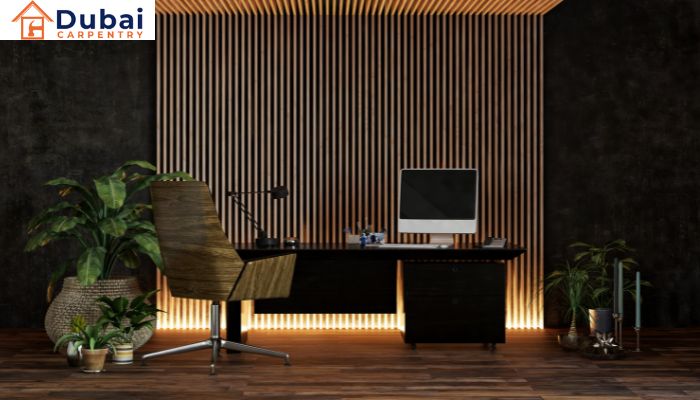
The Benefits of Office Furniture
- Increased Productivity—Well-designed office furniture creates an ergonomic and comfortable workspace that reduces fatigue and discomfort among workers. Ergonomic furniture, such as adjustable desks and chairs that support the body, can help employees maintain better posture, reduce strain, and focus more on their work.
- Improved health and well-being: Ergonomic furniture helps prevent workplace injuries like back pain, neck tension, and carpal tube syndrome. By providing supportive seating, adjustable desks, and appropriate lighting, companies can foster a more healthy and conducive working environment.
- Increased employee morale: Modern and stylish office furniture creates a welcoming and positive work environment that enhances employees’ satisfaction with their jobs. The combination of comfortable seating, ergonomic workstations, and attractive furnishings can create an inviting atmosphere where employees feel at home, fostering a feeling of belonging and pride within the company.
- Increased Collaboration and Communication: Open office plans and collaborative furniture encourage spontaneity and communication among employees. Shared workstations, lounge areas, and meeting spaces also encourage teamwork, collaboration, and innovation.
- Professional Image and Brand Identity: Office Furniture reflects an organization’s culture and values and demonstrates its brand identity, leaving a lasting impact on visitors and clients. Styled and maintained furniture projects a polished and professional image, which instils trust and confidence in a company’s services and products. This contributes to the positive perception of the brand and its customers.
- Optimized Space Utilization: Office furniture designed with thought maximizes space utilization, helping organizations make the best use of the available area. Multifunctional storage, modular furniture, flexible workspaces, and other solutions that optimize space usage help reduce clutter and promote an organized work environment.
- Adaptability for Changing Needs: Flexible office furniture allows organizations to adapt to changing business requirements, technological advancements, and workforce demographics. Options such as mobile furniture, adjustable desks, and modular workstations allow you to easily reconfigure and customize your workspace. They can accommodate changes over time in office layouts, team structure, workflow, or processes.
- Support for Remote Work and Flexibility: Office Furniture to Support Remote Work and Flexibility. With remote working and flexible arrangements on the rise, it is important that office furniture supports employees who alternate between home and work environments. Mobile and lightweight furniture, ergonomic accessories and workstations with technology enable remote employees to create comfortable and productive home offices that encourage work-life harmony and flexibility.
Maintaining Office Furniture for Longevity
It is important to maintain furniture to ensure its durability, preserve its appearance, and promote a comfortable and safe work environment. Here are a few key tips for maintaining office furniture.
- Clean Office Furniture: Create a regular cleaning routine to eliminate dust, dirt, and other debris. To clean furniture such as chairs, desks, and tables, use a vacuum with a brush or a soft, lint-free cloth. To clean stains, use a cleaner designed for upholstered furniture or an upholstery attachment on upholstered items.
- Avoid Harsh Chemicals. When cleaning furniture in the office, do not use harsh chemicals that can damage surfaces and cause stains. Choose mild soapy water or cleaning solutions recommended by furniture manufacturers.
- Avoiding damage: Promote the use of coasters, mats, and desk pads to protect surfaces from scratches, dents, or water damage. Storage solutions, such as shelves and filing cabinets, can help keep supplies and paperwork organized, off desk surfaces.
- Check the furniture regularly to check for signs of damage or wear: Examine the office furniture for any loose screws, damaged casters or worn-out upholstery. To prevent additional damage, address any issues as soon as possible. This will ensure the safety of employees and help to avoid further damage.
- Adjusting and Lubricating the Mechanisms: If your office furniture has adjustable mechanisms, such as desk or chair height adjustment mechanisms, you should inspect them periodically and lubricate them to prevent stiffness or squeaking. Please follow the instructions provided by your manufacturer for any lubrication or adjustment.
- Office Furniture Protection Against Sunlight: Keep office furniture out of direct sunlight to prevent fading and discolouration. Blinds, window films, and curtains can also protect furniture surfaces from UV damage.
- Proper Storage and Handling: It is important to handle and store office furniture properly to avoid injury or damage. Furniture dollies, protective covers, and moving blankets can be used to transport furniture safely between different locations. This will minimize any risk of scratching or denting.
- Professional Maintenance—If you have specialized or complex office furniture, it is worth hiring a professional to inspect, repair, and refurbish it. Technicians are equipped with the knowledge and skills to extend the life of furniture and address any maintenance problems.
Conclusion:
Maintaining office furniture will ensure its functionality, longevity and appearance while also ensuring that employees are working in a comfortable and safe environment. Organizations can protect and extend their furniture’s lifespan by implementing routine cleaning, preventing damages, performing inspections and promptly addressing any maintenance issues.


